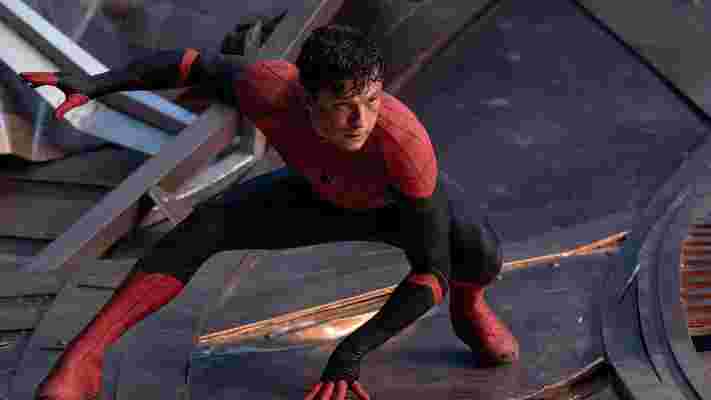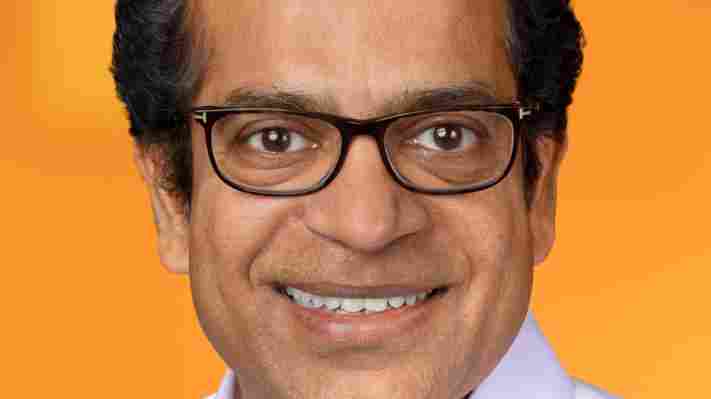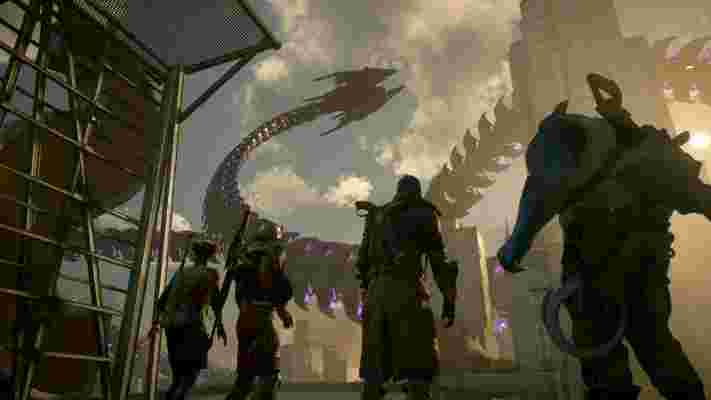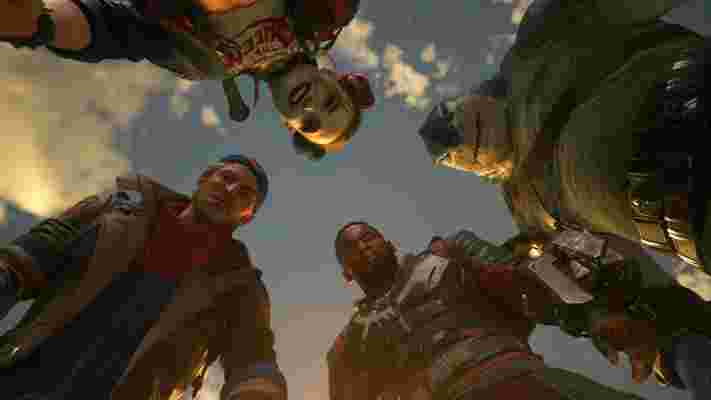Swinging into theaters in December 2021, Marvel’s Spider-Man: No Way Home has since gone on to become the sixth biggest movie of all-time – but when is Peter Parker’s latest adventure hitting streaming services?
Well, the answer is a little complicated. Right now, the only confirmed information concerning No Way Home is its availability to buy and rent on Apple TV , Prime Video , Google Play and a handful of lesser-known platforms.
That being said, we’ve got our own predictions about whether the Phase 4 Marvel movie will come to Netflix and/or Disney Plus in the near future, which you’ll find further down this page.
First up, let’s get into what we do know. If you’re looking to stream No Way Home right now, a digital copy of the film is available to buy outright through Prime Video, Apple TV (iTunes), Vudu, Google Play, Microsoft and YouTube in the US, UK and Australia for $19.99 / £14.99 (around AU$25).
The physical DVD and Blu-ray versions of the movie released on April 4, April 12 and April 13 in the UK, US and Australia, respectively. At which point, No Way Home also became available to rent (as opposed to being purchased in its entirety) through those aforementioned platforms.
We do know, however, that US cable network (and Lionsgate subsidiary) Starz owns the exclusive rights to distribute No Way Home for up to 18 months after its December 2021 release. The movie will be coming to the Starz app some time in the next few months (company CEO Jeffrey Hirsch confirmed as much to Deadline in February 2022).
Incidentally, Starz also exists as a paid add-on service to existing Prime Video subscriptions. Technically, then, No Way Home should be available to stream through Amazon’s entertainment platform when the movie goes live on Starz.

So, with that 18-month Starz exclusivity deal running until July 2023, we wouldn’t ordinarily expect to see No Way Home arrive (at Marvel’s request) on Disney Plus for at least another year. At that point, though, Netflix – which currently owns the distribution rights to Spider-Man films in the UK, Australia, India and other regions – will own the worldwide rights to all Sony movies (per the terms of an existing deal ), meaning a Disney Plus arrival for No Way Home may not be on the cards at all .
At the time of writing, six of the webslinger’s movies are available to stream on Netflix in multiple international markets – Sam Raimi’s Spider-Man trilogy, the two Amazing Spider-Man flicks (starring Andrew Garfield) and Spider-Man: Homecoming, i the webhead’s first MCU solo outing. Spider-Man: Far From Home had also been available to watch on the streamer, but it was removed from Netflix’s back catalog ahead of No Way Home’s release.
Given that Netflix holds the distribution rights to Sony Pictures’ movie slate for the next five years, then (which includes a first-look deal on all upcoming Spider-Man films, per The Wall Street Journal ), it’s inevitable that No Way Home won’t be coming to Disney Plus anytime soon.
So, if you do want to stream the final movie in Tom Holland’s wall-crawler trilogy as part of an existing subscription package, you’ll have to do so on Netflix. As for when that'll be? Not until next year, in the US at least. We’ll update this article when we have more news on that front.
In the meantime, perhaps think about investing in a Starz subscription?
The inside story of the infamous SolarWinds hack
Sudhakar Ramakrishna was sitting down to a birthday meal with his family when he received the call: SolarWinds had suffered a large-scale cyberattack. The date was December 12, 2020 and Ramakrishna was due to start as CEO in a few weeks’ time.
The full scope and severity of the incident was not immediately apparent, but he was still left with a decision to make. Would he abandon the ship, which had sprung a leak under the stewardship of the previous captain, or grab a bucket and begin to bail?
A number of close confidants advised Ramakrishna to abandon the post, while others suggested his skill set and experience in cybersecurity made him the ideal person to preside over the recovery.
Although he took a beat to consider his options, the decision to stay the course was in the end a straightforward one, Ramakrishna told TechRadar Pro . The board was informed he would step back if it was decided SolarWinds would benefit from continuity, but that he was otherwise prepared to pilot the company through the crisis.
In the weeks that followed, Ramakrishna began to collaborate with the executive team behind the scenes. The first priority was to find out exactly what had happened, and how, and the second was to formulate a plan of action that SolarWinds could bring to its customers, partners and the press.
“The idea that an attack can happen to anyone has become more prevalent, but that does not absolve you of the fact it happened to you,” he said. “Every company will have a crisis or two, but what matters is how management reacts.”

A rocky beginning
The attack itself had actually begun many months earlier, in September 2019, when a sophisticated group of cybercriminals with suspected links with the Russian state first gained access to the SolarWinds network.
The threat actors demonstrated remarkable patience, hiding in plain sight while they built up a comprehensive picture of the SolarWinds infrastructure and the company’s product development process.
Among the various SolarWinds products, the attackers were particularly interested in an IT performance monitoring service called Orion, which needs privileged access to the customer’s systems in order to function as designed.
After an initial test run, the hackers injected a malware strain known as SUNBURST into an Orion software update at some point between March and June 2020. The poisoned patch was delivered to circa 18,000 SolarWinds customers, giving the attackers practically unfettered access to the networks of government agencies, security companies and multinational enterprises in the process.
“The industry is not new to security issues, but each comes with its own twist and significance - and this was significant in its own way,” said Ramakrishna.
“The tradecraft used to create the breach was not run-of-the-mill, this was a supply chain attack. This is a well-known concept in the security space, but not a well-exercised one.”

What makes an attack of this kind so difficult to detect, he explained, is that the threat actor need only modify one of many thousands of files to successfully conduct an attack that results in the compromise of a large number of targets.
In the end, the group chose to infiltrate only a subset of the compromised organizations - including Microsoft, Cisco, VMware, Intel and a number of US federal agencies - but the attack has nonetheless been described as one of the most significant in history.
When SolarWinds was alerted to the incident by security firm FireEye, which had detected unusual activity on its own network, the company went into crisis mode. And it was in this climate that Ramakrishna stepped through the doors on his first official day in charge.
However, while the morale among staff was predictably low and the conversations with angry customers often difficult, the crisis at least provided a platform on which Ramakrishna could build.
“In some ways, making change in the midst of a crisis is easier,” he told us. “When everything is perfect, there’s a lot of resistance, but when a company is shell-shocked people are receptive to new ideas.”
On January 7, 2021, Ramakrishna published a blog post that outlined what had been learned about the attack so far, proposed immediate steps to help customers navigate the incident and set out a new framework to prevent a similar attack from recurring in future.
The supply chain conundrum
Although SolarWinds has managed to right itself over the past twelve months, with customer retention now returning roughly to pre-attack levels, the incident had severe effects on the company’s bottom line.
Instead of funnelling resources into product development, sales and demand generation like a normal business would, the company was forced into recovery mode, with its reputation in tatters.
Ramakrishna and his executive team divided up the customer list and began to meet with many of them individually, both to apologize and explain what had happened, and to help them investigate whether their own networks had been breached.
He described this as a highly uncomfortable but essential part of the “healing process” that eventually paved the way to a return to normal business operations.
However, despite the consequences for SolarWinds, there is evidence to suggest the right lessons have not been learned by the wider cybersecurity industry. Since the attack, a number of similar high-profile incidents have taken place, like the Kaseya attack, Log4j and, even more recently, the Okta-Lapsus$ breach .
Asked why he thinks supply chain attacks continue to occur, Ramakrishna explained that the disjointed nature of the collective defense gives a significant advantage to the attacker from the outset.
“This is not just a technology issue, there’s a lot more to it,” he said. “Each one of us is defending against an attacker. But on one side is a coordinated army with a singular purpose, to attack, and on the other is a set of fragmented soldiers.”

Ramakrishna was also critical of the culture of victim shaming, which he believes contributes to an unwillingness among companies to share vital intelligence.
“There is still a lot of victim shaming that happens, so companies often end up fixing problems without saying anything about them. There is definitely hesitation to speak up,” he told us.
“In the event of an incident, it’s important to leverage help from the community. We need to make people aware of issues faster; that mindset needs to establish itself in software security.”
To prevent a supply chain attack of this scale happening again, Ramakrishna also believes businesses need to embrace a new security framework, which he calls “secure by design”.
There are three components to the model: infrastructure security, build system security and the design of the build system itself. But the general idea is to keep modifying the attack surface, so as not to provide an attacker with a fixed target, and to minimize the window of opportunity.
With this objective in mind, SolarWinds has created a “parallel build system” whereby its software is built in three separate locations, which can be changed dynamically. The result of each individual build is then cross-checked with the others to weed out inconsistencies that might betray an attack.
To successfully infiltrate a software patch, therefore, an intruder would have to launch three attacks simultaneously, at precisely the same moment and using precisely the same technique.
“That’s a very difficult thing to do, even for the most persistent cybercriminal,” said Ramakrishna.
The new-look SolarWinds
Ironically, it has been suggested that SolarWinds might now be considered the most secure company in the world. After all, no other organization has undergone quite the same level of scrutiny in the period since the attack was discovered.
Ramakrisha refused to be drawn into commenting on whether or not he believes this characterization to be accurate, but he did say it is something the company is “determined to make true.”
Operating under its secure by design framework, SolarWinds will now look to build upon its foundations in IT monitoring and evolve into a company that can support the hybrid needs of customers, both in the cloud and on-premise.
Ramakrishna has promised a heightened level of automation, and superior visualization and remediation facilities that together will help address the kinds of issues created by digital transformation. The objective is to “reduce complexity, improve productivity and cut costs” for customers, we were told.
With a few rays of sun now starting to peek through the cloud hanging over the company, Ramakrishna is eager to turn his focus towards these central goals. But as our conversation drew to a close, he also took a moment to warn against complacency:
“No company, no matter how much they do, should believe they are immune from attack, because that’s a fallacy,” he said.
Suicide Squad Kill the Justice League: everything we know so far
Looking for details on Suicide Squad: Kill the Justice League, Rocksteady’s next triple-A offering? You’re in the right place.
First announced at DC FanDome 2020, and set in the Arkham-verse previously created by Rocksteady, Suicide Squad: Kill the Justice League will see DC's antihero team working together to stop an alien invasion (headed up by supervillain Brainiac) that threatens the world and has seen the Justice League brainwashed.
Players will have four playable characters to choose from, each with their own “unique moveset” and “enhanced traversal abilities”: Harley Quinn (Dr. Harleen Quinzel), Deadshot (Floyd Lawton), King Shark (Nanaue), and Captain Boomerang (George “Digger” Harkness). While players will be able to play the Suicide Squad game entirely solo, you'll also have the option to play with up to three other players via online co-op.
Suicide Squad: Kill the Justice League was initially scheduled to release in 2022 but Rocksteady has now confirmed a delay that sees the game's release date pushed to "Spring 2023". DC fans do, at least, still have Warner Bros. Montreal’s Gotham Knights and The Batman film to look forward to this year.
Want to know more? Read on for everything we know about Suicide Squad: Kill the Justice League.
Suicide Squad: Kill the Justice League: cut to the chase
Suicide Squad: Kill the Justice League release date and platforms

Suicide Squad is due to release on an unspecified date in Spring 2023 for PS5, Xbox Series X , Xbox Series S and PC, following a delay from its initial 2022 release window.
Suicide Squad: Kill the Justice League was technically announced on August 7, 2020 via the game's official Twitter account . An image of Superman facing away with a target locked upon his head revealing the games' title confirmed its existence before pointing fans to DC FanDome 2020, a virtual online convention due to take place later that month - where Rocksteady officially unveiled Suicide Squad game's initial 2022 release window and first trailer.
However, a delay was confirmed by creative director and Rocksteady co-founder Sefton Hill on Twitter, saying the extra development time would allow the team to bring the game up to the quality fans expect.
“We've made the difficult decision to delay Suicide Squad: Kill the Justice League to Spring 2023,” Hill said. “I know a delay is frustrating but that time is going into making the best game we can."
Suicide Squad: Kill the Justice League trailers
Gameplay trailer The first gameplay trailer for Suicide Squad: Kill the Justice League was revealed at The Game Awards 2021 . The team is tasked with taking down The Flash and Brainiac, which of course won't be easy. We see Harley Quinn, King Shark, Captain Boomerang and Deadshot in action, who each have their own unique movesets and abilities.
Story trailer At DC FanDome in October 2021, another new trailer landed for Suicide Squad: Kill the Justice League. It gives fans even more details about what to expect, from Amanda Waller recruiting the Suicide Squad through to lots of gunfire and fighting in Metropolis.
There are plenty of references to previous Batman: Arkham games as well as characters you might not have expected to see cropping up here, like Poison Ivy and her vines halfway through. Check it out for yourself:
Reveal trailer As part of DC FanDome on August 22, 2020, Rocksteady premiered the first trailer of Suicide Squad: Kill the Justice League. It opens with a look at what seems to be supervillain Brainiac's lair, before confirming the game's location as Metropolis. Panning down we get the reveal of Harley Quinn, followed by her fellow Task Force X members: Captain Boomerang, Deadshot, and King Shark.
Suicide Squad instigator Amanda Waller speaks to Quinn through comms telling them to make their way to the Metropolis Grand Hotel as "alpha target" is now in the open and needs engaging. After a montage where the group takes on hordes of Brainiac's army - to OutKast's B.O.B – Bombs Over Baghdad - they reconverge on a roof. Quinn then tries to remember who they should be on the lookout for, until being suddenly interrupted by a helicopter explosive.
As the smoke clears, it appears that Superman has saved the helicopter pilot – only to decimate the human moments later via heat vision, while seemingly under the control of Brainiac. The group quickly realize that the Man of Steel is their "alpha target", and the trailer ends as a boomerang comically hits Superman's head, with Captain Boomerang uttering: "You shouldn't have done that, shark". Check it out below:

Details of Suicide Squad: Kill the Justice League's campaign are limited for the time being, but we do know that it's an "original narrative" set in the DC universe and a continuation of the Batman: Arkham-verse (the universe created by Rockstead in its Batman: Arkham series of games).
The Suicide Squad game picks up sometime after the events of Arkham Knight and sees Amanda Waller (AKA "The Wall") putting together a task force of Arkham inmates, known as the Suicide Squad, to undertake a covert mission in Metropolis - with Waller implanting lethal explosives in the inmates' heads to encourage them to get on board.
When the ragtag team arrives, they quickly realize that Brainiac is attempting to invade the planet and, in an attempt to do so, has brainwashed the Justice League (including the Flash, Superman and Green Lantern). To save the planet, the Suicide Squad needs to hunt down each brainwashed Justice League member and eliminate them - oh, and takedown Brainiac.
Metropolis will serve as the open-world in Rocksteady's Suicide Squad. The city is best known as the home of Superman, takes inspiration from the likes of Toronto and New York, while also being neighbors with Gotham. Hill described Metropolis as the game's "fifth character" and hopes it will serve as a "love letter to DC fans".
We're hoping to the majority of Justice League members make an appearance in Kill the Justice League, including Aquaman, Wonder Woman and Batman. The latter of which will be an interesting conundrum, considering how Batman: Arkham Knight ended. Several rumors suggest The Dark Knight might work alongside the Suicide Squad in their attempts to thwart the mind-controlled Justice League - though this hasn't been confirmed.
Rocksteady creative director Sefton Hill spoke about the narrative links that will continue on from the Arkham series, during a DC FanDome panel, stating that: "a lot of through threads and storylines you're gonna see come to fruition in this game".

We've only seen snippets of Suicide Squad: Kill the Justice League's gameplay so far, but we do know some solid details.
The Suicide Squad game will be set in an open-world depiction of Metropolis, which we're hoping will be almost like a larger-scale version of Rocksteady's Arkham City. This open-world approach should mean there's plenty to explore and we're hoping there are plenty of Easter Eggs (like in Arkham City).
We also know that you'll have the option to play the game solo or multiplayer. Players who opt for solo play will be able to switch between other members of the squad as they please, with the uncontrolled team members being handled by AI to play alongside you.
If you want friends to join you, they can jump into the shoes of the squad members you don’t want, with up to four players able to play at once. According to Rocksteady, this is going to be a seamless gameplay experience and the co-op will be drop-in, drop-out, so you can have friends playing with you one minute and go solo the next without it impacting your game.
You'll have four playable characters to choose from, each with their own “unique moveset” and “enhanced traversal abilities”: Harley Quinn, King Shark, and Captain Boomerang. While these exact abilities and moves haven't been specified, we did get a look at each of the anti-heroes' unique playstyles in the gameplay trailer released at The Game Awards 2021. From what we saw, Harley is pretty agile, can land powerful melee attacks and has a grappling hook in her arsenal, King Shark is all about brute force but can whip out a chunky gun when he needs, Deadshot lends firepower to the group (capable of both sniping and aerial assaults) while Captain Boomerang is extremely fast on his feet, with his boomerang taking out ranged enemies with ease. As expected then.
Suicide Squad: Kill the Justice League news and rumors
New Artwork Ahead of Suicide Squad: Kill the Justice League’s appearance at DC FanDome 2021, some new key art was released. The Artwork gives us a fresh look at the game’s four main playable characters: Harley Quinn, Deadshot, Captain Boomerang and King Shark.
No more additional characters? It looks like Suicide Squad: Kill the Justice League won’t be expanding its roster of playable characters beyond the four that have already been confirmed. As reported by PCGamesN , a press release for the game states that “yhe game’s original narrative follows the four Suicide Squad members as they take on an impossible mission to save Earth and kill the World’s Greatest DC Super Heroes,” which strongly suggests no more will be added. This definitely casts doubt on previous rumors that the game will be an evolving live service title in the style of Marvel’s Avengers.
Is Warner Bros Interactive leaning into live service? According to a spotted advert for an internship (via IGN ), Warner Bros Interactive Entertainment’s upcoming projects are going to have a “heavy focus on live service”.
There’s a section of the advert which states that “WBIE is currently involved in a variety of new projects, ranging from casual games to core games featuring our well-known franchises on all platforms (console, digital, mobile) with a heavy focus on live service. “
Generally, live service elements in a game will see it being updated by its developer after release with things like new features or storylines. It’s not uncommon in games these days and can be effective when done right but it can also be controversial when a game doesn’t get off to a strong start eg. Marvel’s Avengers .
Although Suicide Squad: Kill the Justice League isn’t referred to directly here, it is one of the games that Warner Bros will be publishing in the next couple of years. However, Rocksteady hasn’t actually confirmed that there will be any live service elements in Kill the Justice League, so at the moment we can't be sure if they have any involvement in Kill the Justice League.
Gotham Knights developer WB Games Montreal has told IGN that its co-op and single-player game won’t involve games-as-a-service elements, which means that there’s no guarantee every game published by Warner Bros Interactive Entertainment is going to be subject to this. Certainly, we haven’t seen any clear evidence that Suicide Squad will include live service elements and as result, we’re going to need to wait for official confirmation from Rocksteady before we can be sure.
Mugshots The official Suicide Squad: Kill the Justice League Twitter account tweeted out some neat mugshots of the game's playable characters which you can see below:
Voice actors So far, two out of the four Suicide Squad members have been confirmed, with long-time Harley Quinn veteran voice actor Tara Strong resuming the role once more. King Shark, on the other hand, will be voiced by WWE wrestler Nuufolau Joel Seanoa a.k.a. Samoa Joe.
While no official word on the voice of Captain Boomerang, it's heavily rumored that Chris Parson has been given the role. He previously voiced Junkrat in Overwatch and there is a huge resemblance when listening to the two.
Deadshot is a little harder to pin down. Chris Cox previously voiced the one-shot wonder in Arkham City and Arkham Origins, both of which are set in the same universe. This Deadshot has been confirmed to be the Floyd Lawton interpretation of the character too, however, there's a huge gaping flaw why it doesn't seem to be Cox that's returning.
For one, the audio clip sounds nothing like his version, and two – the most damming - this Deadshot is black, as opposed to the white version Cox portrayed. Therefore, without an established voice immediately jumping out at people, many believe it may be an up-and-comer. However, King Shark was killed in the direct-to-video Assault on Arkham, so the question of what is actually 'canon' is very much up in the air.
Outside of the Suicide Squad itself, Debra Wilson is confirmed to voice Amanda Waller. Wilson previously voiced Waller in 2017's Batman: The Enemy Within.